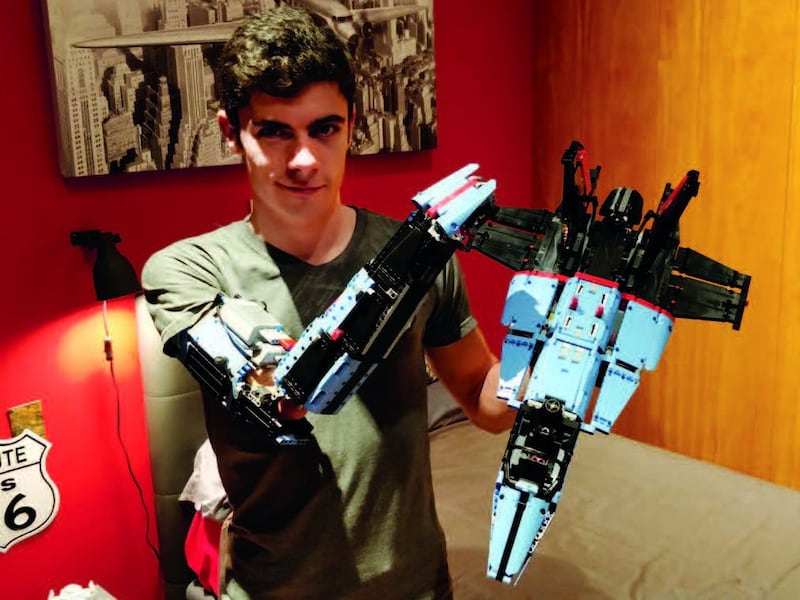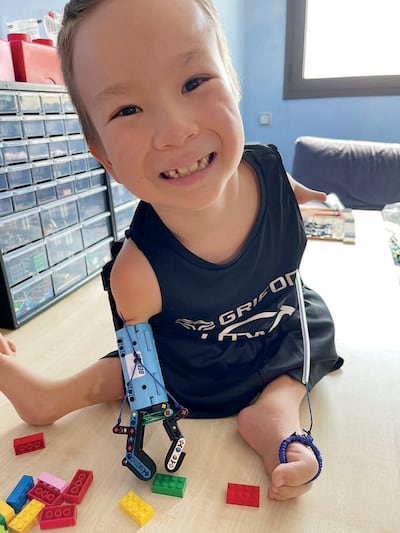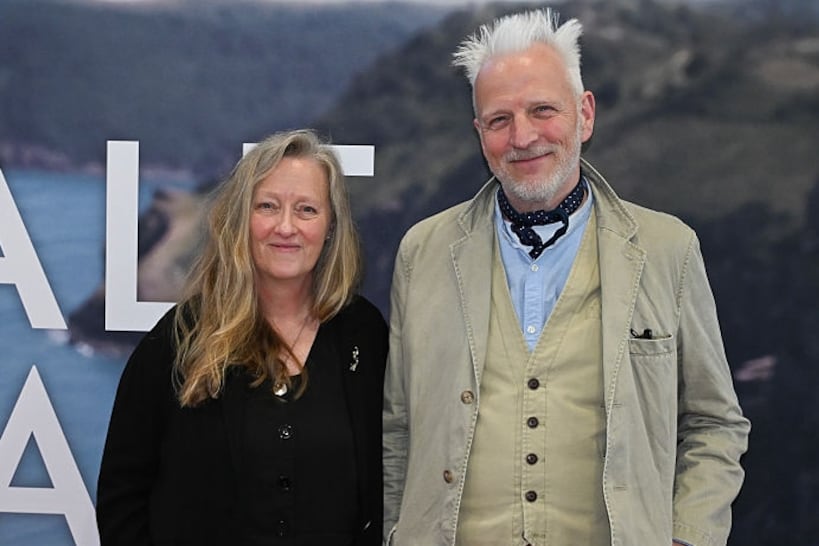David Aguilar was surrounded by toys as a child, from the tiny ones inside Kinder Surprise chocolate eggs to Transformers robots, which he knew instinctively how to turn into vehicles, with no need for instructions. Most of all, he loved Lego. “With Lego you can build anything,” he says. “All you need are the pieces and you can build whatever you want.”
He built his first model of Titanic from them at the age of five — and then, “one day in his room”, just four years later, “he assembled an arm”, his father, Ferran, recalls. It was made from “a wire, a key chain, duct tape, parts of a robot and the most traditional Lego pieces”.
Why an arm? Aguilar, who is from Andorra, was born without his right forearm, as a result of Poland syndrome, a rare disorder.

It hadn’t hindered his creativity as a child — “I always loved to play with my hands even though I was missing one,” he says. His father adds that seeing their son’s innate skill when he was five had made him and his wife, Nathalie, want to help David develop his abilities even further. Nathalie began to buy him Lego after being told it was the best thing he could play with to do this. “He would use his head and his little hand to develop a fine dexterity,” Ferran says. “The most educational toy that you can apply your imaginative skills to is Lego.”
READ MORE
But Aguilar’s disability did lead to some unpleasant experiences at school, with “teasing, laughter and even aggression”, his father says. When Aguilar built this first prosthesis “he was going through one of those difficult moments for being different ... I suggested that he take it to school to help with his self-esteem. When he got home he explained to us that everyone was fascinated — and it helped David a lot back then. But the bullying continued shortly after.”
“I was an easy target,” Aguilar says. “I was the most ‘different’ guy in the classroom.”
[ First Look: Inside Ireland’s first Lego store, on Grafton StreetOpens in new window ]
He carried on building, and at the age of 17 he created the world’s first fully prosthetic Lego arm, which included fingers, a motor and even a pressure sensor. Mk-I, as Aguilar called it, went viral on social media, and set a Guinness World Record. He created the next version, Mk-II, using pieces from a Lego Technic Air Race Jet kit.

He had hesitated to show people his arm at first, he says, “but now I go to places like discos and move around like crazy, because I really enjoy dancing. It has helped me a lot, seeing that, in that type of ambience, I wasn’t being discriminated against by anyone. When I became confident in myself, that discouraged people from making fun of me, as it wasn’t effective.”
Aguilar, who is now 23, and a bioengineering student, has reached Mk-V, the fifth version of his prosthesis; it includes a programmable control unit that enables motors to respond to multiple sensors on the arm. “It’s the most comfortable prosthetic of my models, and I don’t need to use my muscles to lift something — the servo motors do it for me,” he says. He’d like Mk-VI to feature a hand and elbow that can move independently of one another, and is developing fingers that can move in a more natural way.

In the meantime he has launched Hand Solo to help benefit organisations for people with disabilities, and to fight the stigma of what Aguilar prefers to call “diffability”. A key goal is to make prostheses a lot more affordable — one advantage of using Lego is its relatively low price: he needed only €15 worth of blocks to build two prosthetic arms for an eight-year-old, called Beknur Zhanibekuly, whose mother got in touch from their home in the French city of Strasbourg. Beknur can use one of them to pick things up — a cord around his foot allows him to control the arm’s pincer-like grabber — and the other to use a tablet. “If I did it for Beknur,” Aguilar asks, “why not for any other boy or girl who’s missing an arm or a leg or a foot?”
Aguilar has now written a memoir with his father, Piece by Piece. It appeared in Spanish last year and is soon to be published in English. “When I was reading the final draft I cried a little bit, not even noticing I was reading about me,” Aguilar says. “I think people can feel the same way and understand what it means to be different with this type of condition. I hope it’ll help people overcome their fear of being accepted in society and stop bullies from bullying people.”
Piece by Piece: How I Built My Life (No Instructions Required), by David and Ferran Aguilar, will be published by Amazon Crossing Kids on October 25th












